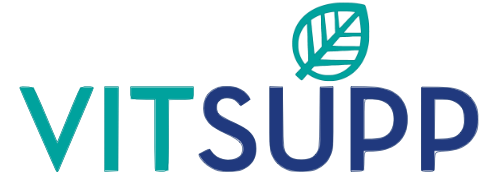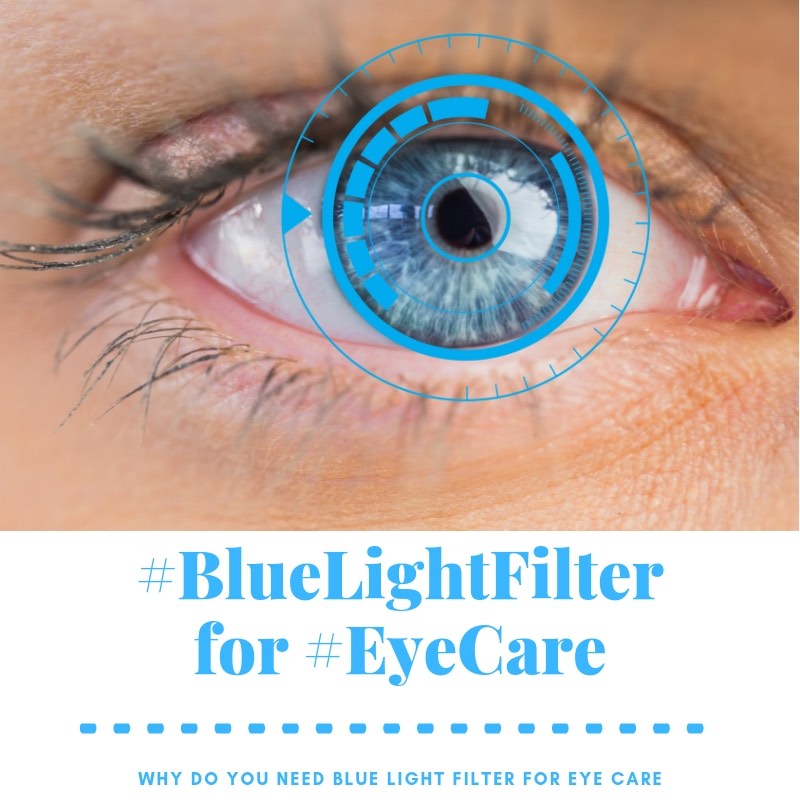Blue light sources are very common today. Any LED light source- be it the tubelight in your bedroom or your computer screen- emits blue light. But while it is more soothing than the harsh yellow of erstwhile bulbs or fluorescent lights, blue light is quite harmful for our eyes. Well off late the awareness of harmful effects of Blue light is going up and more and more people are looking for blue light filter for eye care.
LED devices are here to stay, and everyday, we are spending almost half of our day looking our computer screens, phones or tablets. If you want to prevent eye damage, it is best to use a blue light filter on your gadgets with screens.
Contents
What is blue light?
Blue light is a range of visible light spectrum, with a wavelength of 400-495 nm. It is considered a high energy visible light, as it has a short wavelength. Blue light occurs in the sun, but we do not stare at the sun for too long. The most common source of blue light is LED devices.
In many LED lights and gadgets with screens, blue light is converted into white light by pairing a blue light emitting diodes (LED) with a lower-energy phosphor, thereby creating solid-state light (SSL). SSL is regarded as the next big thing in illumination technology. (1)
The reason why blue light is so common now is because it is highly energy efficient. The 2014 Nobel Prize for Physics was awarded to a trio of scientists in Japan and US for the invention of blue LED. Professors Isamu Akasaki, Hiroshi Amano and Shuji Nakamura made the first blue LEDs in the early 1990s. Their work paved the way for creating bright, energy efficient LED white lamps and LED screens. (2)
Are LED lights safe for the eye?
Eyes are the most sensitive organs in a human body. Prolonged exposure to any bright light may cause severe damage to our eyeballs and disrupt our sleep patterns. Blue light is no exception. (3)
Studies show that light of certain wavelengths or intensity may damage the retinas. This damage happens when the retina absorbs light, and the tissues heat up. Studies indicate that prolonged exposure to less-intensity light are damaging to the eyes. Blue light can definitely lead to photosensitivity and photo-receptor damage to the retina. (4)
Blue light effects on eyes
A Nielsen study found that an average American spends 11 hours a day staring at some screen. (5) That is a lot of exposure to blue light. There are many ways in which blue light may damage your eyes. The damage is doubled when we stare at our tablets or phone in the dark.
Blue light may cause eye pain
Our eyes are like cameras. When we try to read in low light, our pupils focus the light into a very small space inside our eyes. This actually increases intensity of the light.
It also leads to considerable eye strain, as the muscles and tissues have to contract to maintain that focus. Hence, if you study in low light for long, you will start getting a headache. (6)
Blue light can cause retinal damage
Since blue light is already a high energy light, staring at smartphone or tablet screens increases chances of retinal damage. This is more so when we look at our phones and laptops in the dark. Prolonged exposure to blue light also increases chances of macular degeneration and may even result in early onset of glaucoma. (7)
Blue light can disrupt sleep cycles
Our body clocks are aligned to daylight. The circadean rhythm is the human body’s 24-hour internal clock that keeps running in the background of the brain. This determines our wake and sleep cycles. This is the reason why we feel energized or drowsy at certain points of the day. (8)
Circadian rhythms are tied to exposure to light. In natural circumstances, our bodies are attuned to wind down as the night sets it. Sleep is vital to our well being, so maintaining our circadean cycles is of great importance. When we stare at our phones or laptops for long, especially after sundown, our circadean cycle goes for a toss. People who stare at screens after sundown or before going to bed will have trouble falling asleep. This may lead to many physical and psychological effects. (9)
Blue light and possible link to diabetes and cancer
Exposure to light suppresses secretion of melatonin , the hormone responsible for maintaining circadean rhythm Evidence exists diminished melatonin levels are tied to spike in blood sugar levels and may even lead to cancer. Scientists found that blue light causes twice as much suppression of melatonin and shifting of circadian cycles than green light. (10)
Blue light might cause flashes in the eye
Blue light dries off eyes faster than green light Studies show that when exposure to blue light or light intensity of blue light is reduced, it mitigates dryness in eyes. (11)
Dryness in the eyes may lead to serious complications. When we look at our phones and tablets, we usually hold them very close to our eyes. Nearsightedness may lead to retinal detachment. An early symptom of retinal detachment is seeing flashes in the eyes, or seeing a rim of light. These happen because the tissues in the eyes dry out, and the gel like fluid in our eyes dry up and tug against the retina. (12)
Usually, flashes in our eyes are harmless, but if you are getting them frequently, consult a doctor as soon as possible.
Blue light filter for eye care
The reason why blue light emitting devices are ubiquitous is that they are highly energy efficient. With growing population, increasing pollution and fast depletion of natural resources, it is important that we find clean, cheap, non-polluting sources of energy.
As a result, our gadgets like computers, lights, television, lamps, smartphones and tablets have to be energy efficient and affordable. While research is going on, scientists haven’t found a better alternative to blue light in the field of illumination technology.
Since avoiding blue light is avoidable, it is better that we take some precautions to protect our eyes.
A study showed that workers who used blue-blocking goggles which working the night shift showed less suppression of melatonin. While it may not be possible for us to strap on blue light filter goggles in our homes, we can start by installing blue light filtering apps on our phones or tablets or laptops. (10)
How do blue light filter apps work?
Blue light emitted for LED screens strain your eyes and make it difficult for you to fall asleep. Installing blue light filtering apps lets you change that level of exposure. These apps adjust the screen color, which reduces blue light and helps your eyes to relax. Thus, you can fall asleep easily.
In Conclusion
Blue light can damage your eyes and disrupt sleep cycles, which have long term effects on your health. It is important that you have a blue light filter installed in your phones or tablets.
If you are working a night shift, ask your employer to enable installation of a blue light filtering app on your workstation. Some machines have a “night mode” screen setting which has a light filtering function in-built.
You can buy or get many blue light filtering apps from Google Play, Apple and other app stores. Some of these apps simply reduce blue light, and others are blue light filters with natural color which go one step ahead. You can easily turn off the filter when you want.
FAQs on Blue Light Filter for Eye Care
Q1. What is blue light?
Blue light is a range of visible light spectrum, with a wavelength of 400-495 nm. It is considered a high energy visible light, as it has a short wavelength. In many LED lights and gadgets with screens, blue light is converted into white light by pairing a blue light emitting diodes (LED) with a lower-energy phosphor, thereby creating solid-state light (SSL). SSL is regarded as the next big thing in illumination technology. (1)
Q2. Are LED lights safe for your eyes?
Studies show that light of certain wavelengths or intensity may damage the retinas. This damage happens when the retina absorbs light, and the tissues heat up. Studies indicate that prolonged exposure to less-intensity light are damaging to the eyes. Blue light can definitely lead to photosensitivity and photo-receptor damage to the retina. (4)
Q3. Does reading in low light affect your eye?
Our eyes are like cameras. When we try to read in low light, our pupils focus the light into a very small space inside our eyes. This actually increases intensity of the light.
It also leads to considerable eye strain, as the muscles and tissues have to contract to maintain that focus. Hence, if you study in low light for long, you will start getting a headache. (6)
Q4. Is blue light bad for falling asleep?
In natural circumstances, our bodies are attuned to wind down as the night sets it. Sleep is vital to our well being, so maintaining our circadean cycles is of great importance. When we stare at our phones or laptops for long, especially after sundown, our circadean cycle goes for a toss. People who stare at screens after sundown or before going to bed will have trouble falling asleep. This may lead to many physical and psychological effects. (9)
Q5. Can blue light cause flashes in the eye?
When we look at our phones and tablets, we usually hold them very close to our eyes. Nearsightedness may lead to retinal detachment. An early symptom of retinal detachment is seeing flashes in the eyes, or seeing a rim of light. These happen because the tissues in the eyes dry out, and the gel like fluid in our eyes dry up and tug against the retina. (12)
Q6. Can blue light filters prevent eye damage?
A study showed that workers who used blue-blocking goggles which working the night shift showed less suppression of melatonin. While it may not be possible for us to strap on blue light filter goggles in our homes, we can start by installing blue light filtering apps on our phones or tablets or laptops. (10)
Q7. How do blue light filtering apps work?
Blue light emitted for LED screens strain your eyes and make it difficult for you to fall asleep. Installing blue light filtering apps lets you change that level of exposure. These apps adjust the screen color, which reduces blue light and helps your eyes to relax. Thus, you can fall asleep easily.
References
- Effects of blue light on the circadian system and eye physiology NCBI
- The Nobel Prize in Physics The Nobel Prize
- Molecular mechanisms of light-induced photoreceptor apoptosis and neuroprotection for retinal degeneration NCBI
- Blue light hazard in rat NCBI
- THE NIELSEN TOTAL AUDIENCE REPORT: Q1 2018 NCBI
- Presbyopia Overview NCBI
- Age-related maculopathy and the impact of blue light hazard NCBI
- What is circadian rhythm? National Sleep Foundation
- Effects of sleep deprivation on cognitive and physical performance in university students NCBI
- Blue light has a dark side Harvard Health
- Reducing Short-Wavelength Blue Light in Dry Eye Patients with Unstable Tear Film Improves Performance on Tests of Visual Acuity NCBI
- Retinal Detachment NCBI


